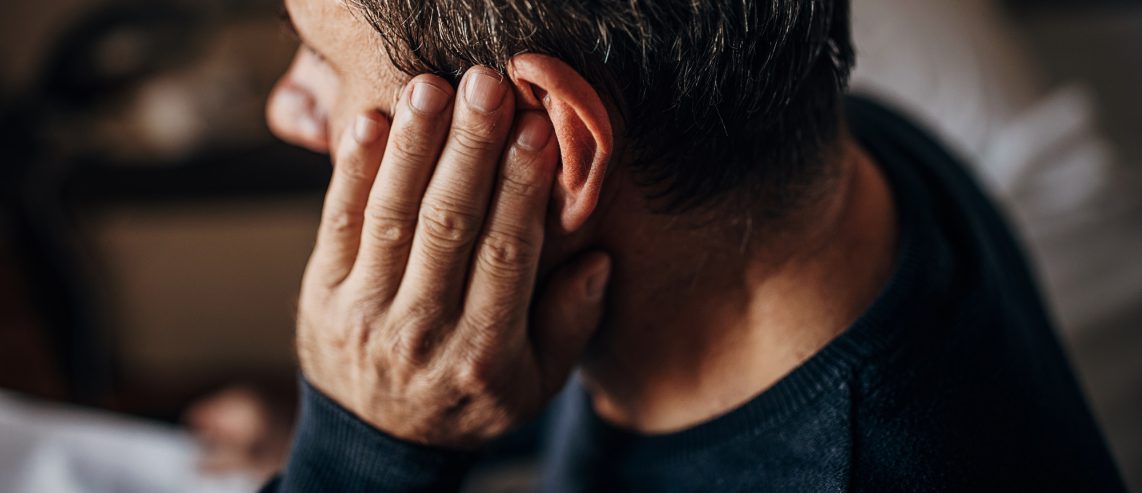Now and then, your ears seem clogged, or you notice a clump of earwax on your outer ear. You might feel tempted to try removing earwax at home. Before you do so, here’s what you need to know to be sure you do it safely.
Why Do We Have Earwax?
It may not look appealing, but earwax (scientific name: cerumen) has a purpose. Earwax cleans the ear canal, picking up dead skin, dirt, and hair as it moves along. It also keeps bacteria from entering the ear, and it even kills germs.
Earwax develops from fatty secretions in glands along the ear canal. When you talk or chew, your jaw movements propel the earwax through the ear canal and out of your ear.
Never Miss a Beat!
Subscribe to Our HealthBeat Newsletter!
Thank you for subscribing!
You can now select the specific newsletters you'd like to receive.
You are already subscribed.
Subscribe to more newsletters in our email preference center.
Sorry, an error occurred. Please try again later.
Get Healthy Tips Sent to Your Phone!
Do I Need to Remove Earwax?
Usually, you don’t need to remove earwax. Earwax is the body’s natural way of keeping your ears clean and healthy.
But sometimes your body makes too much earwax, or the earwax has built up in your ear canal and become impacted. When that happens, you may notice an uncomfortable feeling of fullness in your ear. An earwax buildup may even diminish your hearing or cause ringing in your ears (tinnitus).
Here are some reasons that earwax builds up.
- You pushed the earwax in with a cotton swab. Earwax can become impacted when you push an object into the ear canal.
- You regularly wear hearing aids or earbuds. These objects can prevent earwax from moving out of the ear in the normal way. They may also trigger production of more earwax as your body tries to get rid of the foreign object.
- You’re an older adult. As you age, the glands that make earwax produce fewer fatty secretions. The earwax gets harder and crustier, and it’s more likely to get stuck in the ear canal.
- You have narrow ear canals. Ears come in different shapes and sizes. Some people are more prone to earwax buildup because their ear canals are small.
- You have eczema. This condition produces dry, flaky skin that may lead to hard earwax.
How to Remove Earwax Safely at Home
If you have earwax buildup, you can try to remove it carefully at home. Since your ears are delicate and easily damaged, keep the following tips in mind:
Do:
- Use a damp washcloth to gently clean the outer portion of your ear when you bathe or shower.
- Try a few drops of mineral oil, baby oil, or saline solution in an eyedropper to loosen earwax. Hold your head sideways and let the liquid work its way into the ear canal. Wait a minute or two, then tilt your head the other way so the liquid and ear wax run out.
- Try an over-the-counter irrigation kit. These kits come with an earwax softener and a bulb syringe to gently wash out the ear canal with water.
Don’t:
- Use any object (cotton swab, bobby pin, fingernail) to clean out your ears. You’ll just push the earwax further back in the ear canal. You could also damage your eardrum.
- Use ear candles. Ear candles have been a trend for a while, but they don’t remove earwax. They can lead to burns and other injuries.
- Try cleaning your ears if you have an ear infection or a damaged eardrum.
When to See a Doctor for Earwax Removal
If your ears still feel clogged after home treatments, you should see a doctor. Your primary care doctor can usually perform earwax removal in the office. They use special instruments to remove excess earwax.
Sometimes primary care doctors or urgent care centers will use an irrigation method to remove earwax. The irrigation method is not recommended for people with a history of certain ear problems (frequent infections, ear drum abnormalities). People with a history of ear problems may want to see an ear, nose and throat specialist for earwax removal.
Call your doctor right away if you have any of the following symptoms.
- Severe ear pain.
- Bleeding from your ears.
- Drainage from your ears.
- Sudden hearing loss.
These are not ordinary symptoms of excess earwax and indicate a more serious problem. You may need to see an ear, nose, and throat doctor.
Sources
American Academy of Family Physicians, Ear Health and Care, Link
American Academy of Otolaryngology-Head and Neck Surgery, Experts Update Best Practices for Diagnosis and Treatment of Earwax (Cerumen Impaction) Important Patient Education on Healthy Ear Care, Link
American Academy of Otolaryngology-Head and Neck Surgery, Frequently Asked Questions: Earwax Prevention, Link
NHS, Earwax build-up, Link
AARP, The Ins and Outs of Safe Earwax Removal, Link
About UPMC
Headquartered in Pittsburgh, UPMC is a world-renowned health care provider and insurer. We operate 40 hospitals and 800 doctors’ offices and outpatient centers, with locations throughout Pennsylvania, Maryland, New York, West Virginia, and internationally. We employ 4,900 physicians, and we are leaders in clinical care, groundbreaking research, and treatment breakthroughs. U.S. News & World Report consistently ranks UPMC Presbyterian Shadyside as one of the nation’s best hospitals in many specialties and ranks UPMC Children’s Hospital of Pittsburgh on its Honor Roll of America’s Best Children’s Hospitals. We are dedicated to providing Life Changing Medicine to our communities.
